Individual Differences and Language Acquisition in EFL classes
Case study: 1st year master English Students At
“ABBAS LAGROUR” UNIVESITY OF KHENCHELA
Contents
Dedication………………………………………………………………………..I
Acknowledgement………………………………………………………….……II
Content……….………………………………………………………………….III
List of Tables……………………………………………………………………….VII
List of Figures…………………………………………………………..………..IX
List of abbreviations ……………………………………………………………..X
Abstract……………………………………………………………………………XI
General Introduction
Chapter I: An Overview on individual differences and language acquisition.
I.1. Introduction …………………………………………………………………….5
I.2.definitions and taxonomies of individual differences (IDs) ……………… 5
I.3.overview of selected individual learner differences……………………………8
I.3.1. Cognitive variables………………………………………………………………..8
I.3.1.1. Intelligence………………………………………………………………8
I.3.1.2. Aptitude………………………………………………………………….10
I.3.1.3. Learning styles………………………………………………….10
I.3.1.4.Learning strategies ……………………………………..………….11
I.3.1.5. Age………………………………………………………………………..11
I.3.2. Affective variables………………………………………………………………….12
I.3.2.1. Motivation…………………………………………………………………12
I.3.2.2. Personality…………………………………………………………………. 13
I.3.2.3. Anxiety……………………………………………………………………..13
I.3.2.4. Self-esteem…………………………………………………………………14
I.3.2.5. Willingness to communicate…………………………………………….14
I.3.3. Social variables………………………………………………………………………..15
I.3.3.1. Gender……………………………………………………………………….15
I.3.3.2. Beliefs……………………………………………………………………………16
I.4.Why individual differences matter…………………………………………………….16
I.5.The Psychology of Individual Differences…………………………………………..17
I.6.Stability of individual differences………………………………………………….18
I.7.Causes of individual differences (no references)……………………………………18
I.7.1. Race ……………………………………………………………….………19
I.7.2. Sex …………………………………………………………………………….19
I.7.3. Heredity…………………………………………………………………….20
I.7.4. Maturity……………………………………………………………………20
I.7.5.Social and economic status…………………………………………………21
I .8. An overview of language acquisition………………………………..…21
I.8.1.child language acquisition theory – Chomsky, Skinner HYPERLINK “https://aggslanguage.wordpress.com/chomsky/”&HYPERLINK “https://aggslanguage.wordpress.com/chomsky/” Piaget …….…22
I.8.1.1. Chomsky …………………………………………….22
I.8.1.1.1.Evidence to support Chomsky’s theory…………….23
I.8.1.1.2.Evidence against Chomsky’s theory…………………23
I.8.1.2. Skinner …………………………………………………………24
I.8.1.2.1.Limitation of the behaviourism theory:…………………24
I.8.1.3. Piaget …………………………………………. ………………25
I.8.1.3.1. Evidence to support Piaget’s theory…………………….26
I.8.1.3.2.Criticisms of Piaget’s Theory…………………………………26
I.8.2. Defining Language Acquisition ……………………………………….26
I.8.3.Defining Language Learning…………………………………………….27
I.8.4.A second language………………………………………………………27
I.8.5.A foreign language………………………………………………………………..27
I.8.6. Comparison of L1 and L2 acquisition…………………………………….27
I.8.7.Language Acquisition vs. Language Learning……………………………28
I.9.Conclusion……………………………………………………………….29
Chapter II: Data analysis and findings of the students‘ questionnaire
Introduction ……………………………………………………………………30
II.1.Population…………………………………………………………….….. 30
II.2.Design and description of the students’ Questionnaire ………………….30
II.3.Analysis of the students’ Questionnaire……….…………………..………31
II.4.Findings …………………………………………………………………….49
General conclusion………………………………………………………….……52
List of Tables
Students’ Questionnaire Result Analyses list of tables
Table 01: students’ gender.
Table 02: students who speak other languages and who don’t.
Table 03: number of years that students have been studying English language.
Table 04: students’ learning abilities.
Table 05: individual, pair or group work.
Table 06: best methods of receiving information.
Table 07: awareness of the importance of the learning styles in facilitating the language acquisition.
Table 08: Teachers and learning styles.
Table 09: Students’ goals through acquiring the English language.
Table 10:students’ views about their level of proficiency in English language.
Table 11: learners’ perspectives’ about their level of patience as EFL learners .
Table 12: Students’ proficiency as EFL learners.
Table 13: the role of age in the process of acquiring language.
Table 14:students’ desire to communicate in public.
Table 15: the effect of the emotional situation of EFL learners on his ability to acquire language.
Table 16:the origin of IDs.
Table ‘A’: The seven intelligences (adapted from Gardner ad Hatch 1989)
List of Figures
Students’ Questionnaire Results Analyses Figures
Figure 01: students’ gender.
Figure 02:students who speak other languages and who don’t.
Figure 03: number of years that students have been studying English language.
Figure 04:students’ learning abilities.
Figure 05:individual, pair or group work.
Figure 06:best methods of receiving information.
Figure 07: awareness of the importance of the learning styles in facilitating the language acquisition.
Figure 08:Teachers and learning styles.
Figure 09:Students’ goals through acquiring the English language.
Figure 10: students’ views about their level of proficiency in English language.
Figure 11: learners’ perspectives’ about their level of patience as EFL learners .
Figure 12: Students’ proficiency as EFL learners.
Figure 13: the role of age in the process of acquiring language.
Figure 14: students’ desire to communicate in public.
Figure 15: the effect of the emotional situation of EFL learners on his ability to acquire language.
Figure 16: the origin of IDs.
List of Abbreviations
EFL: English as a Foreign Language
IDs: individual differences
SLA: second language acquisition
MLAT: Modern language aptitude test
LAD: language acquisition device
PLAB/LAB: Pimsleur Language Aptitude Battery/ Language Aptitude Battery
L1: language one
L2: Language two
FL: Foreign language.
Abstract
The current study aims at identifying how individual differences affect the language acquisition process in the EFL classes, knowing students individual differences and taking them in consideration while preparing the course by teachers will help students to acquire the language better then when they don’t put them in consideration, this study is directed to the first year Master degree LMD students of English as a Foreign language at the Department of English University Abbess Laghrour Khenchela, the academic year (2016-2017).This research was designed to answer the research question which is: “How could individual differences affect the language acquisition in EFL classes?”. To answer this question researchers use a descriptive design and methods with related litterateur. To gather the needed data. a questionnaire was used as a data gathering tool , distributed 30 students; the sample was selected from the first year Master students (population is 90 students) in the Department of English. The responses rate and analysis has shown that the EFL students are not aware of the importance of their individual differences in the process of acquiring language and it will be helpful if they take it in consideration and be aware of it. It the other hand and because of the lack of time and teachers are not present to answer our questions we couldn’t take the teachers views about the subject.
ملخص:
تهدف هذه الدراسة لتحديد تأثير الفروقات الفردية على عملية اكتساب اللغة في أقسام اللغة الإنجليزية كلغة أجنبية, معرفة هذه الفروقات الفردية وأخذها بعين الاعتبار سواء من طرف التلميذ أو الأستاذ نفسه خصوصا عند القيام بتحضير الدرس يساهم ذلك بشكل ايجابي في عملية اكتساب اللغة على عكس تهميشها وعجم أخذها بعين الاعتبار.هذه الدراسة موجهة لطلبة السنة الأولى ماستر( نظام آل.آم.دي) قسم اللغة الإنجليزية في جامعة عباس لغرور خنشلة للسنة الدراسية 2016/2017. صمم هذا البحث لحل الإشكالية المتمثلة في:” كيف يمكن لهذه الفروقات الفردية أن تؤثر على اكتساب اللغة في أقسام الإنجليزية كلغة أجنبية. للإجابة على هته الإشكالية قام الباحثون باعتماد النمط الوصفي كطريقة ومنهج ة بالإضافة لاعتماد المراجع الأدبية اللازمة.ولجمع البيانات المطلوبة تم إجراء استفتاء, حيث وزعت أوراق الاستفتاء على 30 طالب تم اختيارهم عشوائيا من بين طلبة السنة الأولى ماستر (مجموع السنة الأولى ماستر هو 90 طالب) في قسم اللغة الإنجليزية. تحليل نتائج الإجابات المتحصل عليها أظهر أن الطلاب غير واعون بأهمية هته المميزات التي يمتلكونها وأثرها على عملية اكتساب اللغة وعلى درجة براعتهم في استخدام هته اللغة. من ناحية أخرى وبسبب ضيق الوقت لم يتسنى لنا الفرصة لأخذ وجهات نظر وآراء الأساتذة حول الموضوع المدروس.
GENERAL INTRODUCTION
The level of 2nd language acquisition depends on many factors , individual differences such as : sex, age, aptitude …etc are playing a major role in the language learning process , we could notice that some learners achieve the native speaker’s level of competence while others never seem to progress much beyond beginner’s level according to some notes at the English department of Khenchela’s’ university .humans differ from each other due to many biological or conditional factors affected by nature and unconscious factors affect by past experiences .
The issue here is how to shed light on students’ individual differences and their role in EFL acquisition.
2. Aims of the study:
This thesis aims at investigating and making the EFL teachers aware of the importance of individual differences, teachers in the university have to know how to use their students’ individual differences to improve their language acquisition and help them to find out the best method to acquire language.
3. Limitations of the study:
4. Significance of the study:
This study seems to be worth conducting for different reasons:
1st: the EFL teachers need to find new strategies to deal with their students differences.
2nd: students need to find out their best methods to acquire language through their individual differences.
3rd: throughout this study, the importance of using individual diff becomes a major factor in the teaching methodology.
4th: last but most important reason is one of the 1st requirement of the ministry of higher education this year to be included in the master curriculum.
5. Background of the study:
The study on second language acquisition began in the west, from the end of the 1960s to the early 1970s. The classic paper The Significance of Learners’ Errors written by S. P. Corder published in 1967 made a milestone in this research area. Altman (1980) found out the factors affecting learners’ individual differences, including age, sex, language learning experience of the past, the native language proficiency, character, linguistics, motivation and attitude, intellectual factor, cognitive strategies and methods, etc.. Skehan (1989) also argued that the factors of learners in individual differences include linguistics, language learning strategies, and motivation, cognition and emotion, character, intelligence, cognitive styles, anxiety, etc. Altman and Skehan further studied social and psychological factors, cognitive style and brain hemispheric lateralization, learning strategies, memory and gender factors. As a representative of foreign scholars in linguistics, Ellis (1989) established the system of second language acquisition theories and put forward the basis of the theoretical mode. He divided individual differences into two categories: personal factors and common factors. The system classification makes the theory of individual differences in second language acquisition be carried out not only in depth but also in breadthˊ
6. Research question:
How could individual differences affect the language acquisition in EFL classes?
What are the best ways to use individual differences for achieving the best level of language acquisition?
7. Research design:
We opt for a simple descriptive design .This research is conducted in order to find out the relationship between individual differences and the process of acquiring language. And to seek the importance of knowing students individual differences on the language acquisition process. The descriptive design will permit us to identify this relation and moreover to collect the need data about the subject under investigation.
8. Population and sample:
The population from which we select our sample includes about 90 students they’re a first year Master students (2016/2017). We take a sample about (30) of 3rd year English students.
9. Data gathering tools:
In order to answer the research questionnaire, we opt for a quantitative tool using a questionnaire as the needed data gathering tool.
10. Data analyses:
All obtained data will be interpreted and presented in tables; statically analyzed to be interpreted. Answers are going to be represented in terms of numbers and percentages.
11. Administration and design of the questionnaire:
The questionnaire will be administered to first year Master degree LMD students of English as a Foreign Language at the department of English ―Abbess Laghrour‖ university of Khenchela. The questionnaire was composed of 16 questions to investigate the role the individual differences on the student’s language acquisition.
Chapter One: An Overview on individual differences and language acquisition.
I.1.Introduction:
The main law that manage the human behaviour is the “INDIVIDUAL DIFFERENCES”. People are really different may be more than they look like, and we could see that there is no way to be closer to that phenomenon sooner in life than formal education, Individual differences in academically related characteristics can cause failure or success. in peoples’ lives most important pursuits; obtaining an education. According to Corno et al. (2002), each individual “has worked out over many years how to respond in her own way to symbol systems and social cues. Each has aptitude for the current situation.
The term ‘Individual differences’ is defined as “anything that marks a person as a distinct and unique human being”. all scientific definitions of IDs assume the relevance of stability: Differential psychology emphasizes individual variation from person to person only to the extent that those individualizing features exhibit continuity over time Yet, even with this limitation the individual can be different in extensive ways, due to the innumerable interactions between heredity and environment that occur throughout one’s life span.
1.2. Definitions and taxonomies of individual differences:
It is a common observation that People are really different may be more than they look like, yet it is not that clear why and how they differ. The domain of study that deals with differences in human behavior is called “differential psychology”. As Revelle et al. explained in the Wiley- Handbook of Individual Differences, “The study of the individual differences include the study of influence, behavior, awareness and motivation as they are affected by biological causes and environmental events”. Furthermore, researchers in the domain of SLA have been interested in the individual differences between people learning their second, third or even fourth foreign language. A number of psychologists and applied linguists tried to define, describe and classify individual differences to know and try to control the factors that cause success in learning a second/foreign language. There are many psychologists and linguists that proposed taxonomy or a divisions for the “individual learner differences”, we’ll mention the most important ones.
First, we should start with the taxonomy proposed by Ellis (1985) (as it is the taxonomy used in this research) individual differences are divided into two main types: personal and general factors. Personal factors refer to individuals’ L2 learning and contain nesting patterns, the desire to maintain and transition anxiety then finally a personal language learning agenda. The last one were divided into modifiable and unmodifiable factors; modifiable factors arethe ones that could change during the course of SLA and they are 7, e.g. motivation and unmodifiable factors are the ones that cannot change in some conditions, e.g.aptitude. Ellis also mentioned that there are social, cognitive and affective variables of both personal and general factors.
Gardner (1985), also , classify and discuss aptitude with personality in one part and attitudes with motivation in another, and present orientation as a special variable from motivation separate this variable into two types: integrative and instrumental.
Cook (1991) made a chosen list of IDs using those variables: motivation, aptitude, learning strategies, age, personality and other personal factors. The special things in this taxonomy is that he discusses the issues of cognitive styles briefly and also the introvert/ extrovert difference under the label of personality, and uses the expression other individual variation for some factors as intelligence, sex differences, command of the first language or empathy.
Williams and Burden (1997), divide individual differences into two categories:
obvious (age, gender, personality, aptitude, intelligence and motivation) and less obvious
(cognitive styles and strategies, anxiety and preparedness to take risks).
Brown (2000) does something new which is mentioning the differences between styles and strategies, socio-cultural variables (age, aptitude and intelligence), personality variables (motivation, empathy, inhibition, anxiety, risk-taking, extroversion/ introversion, and self-esteem). He classifies motivation as a personality variable that could change and bring surprises sometimes.
Dörnyei and Skehan (2003) divide their paper about those variables in the language acquisition process into four main parts: motivation, learner strategies, cognitive and learning styles, and foreign language aptitude, and from other the other side he didn’t describe some of those variables, for example, personality.
A very important remark should be mentioned is that some of the variables discussed before are believed to be stable variables like when we talk about gender or age and may be some personality features. In the other hand teachers are able to shape their students’ variables in some conditions using the appropriate exercises and this will be done in the aim of achieving the best from the language acquisition process.
I.3.Overview of selected individual learner differences:
In our research we divide the individual learner differences into three broad categories; cognitive, social and effective. Here we’re going to give definitions of each one of them.
I.3.1.Cognitive variables:
We’ve two main intellectual qualities connected with the process of acquiring language .The first one, is intelligence and the other one is aptitude that specifically refers to learning a language.
I.3.1.1.Intelligence:
Intelligence has a huge influence on language acquisition or in the learning process in general , it is referring to the “general ability that governs how well we master a whole range of skills, linguistic and nonlinguistic. The ability to judge, comprehend, and reason understand and deal with people, objects, and symbols ,think rationally and The ability to solve problems and to adapt to and learn from life’s everyday experiences Includes characteristics such as creativity and interpersonal skills, it is one of the factors influencing foreign language acquisition.
There is a positive correlation between intelligence and foreign language learning, In 1962, Pimsleur, Mosberg and Morrison discussed intelligence in connection with foreign language acquisition. Each of us has all of the eight types of intelligence to varying degrees. These multiple intelligences are related to how an individual prefers to learn and process information.
Table A. The seven intelligences (adapted from Gardner ad Hatch 1989)
| The seven intelligences | ||
| Intelligence | End-states | Core components |
| Logical-mathematical | Scientist mathematician | Sensitivity to, and capacity to discern or numerical patterns: ability to handle long chains of reasoning |
| Linguistic | Poet journalist | Sensitivity to the sounds, rhythms, and meaning of words: sensitivity to the different functions of language |
| Musical | Composer violinist | Abilities to produce and appreciate rhythm, pitch, and timber: appreciation of the forms of musical expressiveness. |
| Spatial | Navigator sculptor | Capacities to perceive the visual-spatial world accurately and to perform transformations on one’ initial perceptions. |
| Bodily-kinesthetic | Dancer Athlete | Abilities to control one’s body movements and to handle objects skillfully. |
| Interpersonal | Therapist Salesman | Capacities to discern and respond appropriately to the moods, temperaments, motivations, and desire of other people |
| Intrapersonal | Person with detailed-accurate self-knowledge | Access to one’s feelings and the ability to discriminate among them to guide behavior: knowledge of one’s own strengths, weakness, desire, and intelligences. |
I.3.1.2.Aptitude:
Language aptitude is a process that closely related to intelligence, according to Dörnyei (2006: 45) writes, “The concept of language aptitude is related to the broader concept of human abilities, or intelligence, covering a variety of cognitively-based learner differences”. Aptitude was described as ‘special ability’, ‘gift’ that characterize the individual from others . the definition of the aptitude taking in consideration its relation with language is “specific abilities thought to predict success in language learning (…)”. Ranta (2002: 162). Its mentioned as how quickly students learn a foreign language.
Dahlen and Caldwell-Harris (2013: 902) said that “It is commonly assumed that all typically developing individuals can learn a foreign language. However, the amount of time required and the best teaching method of learning environment may differ from person to person”. So we have some variables to measure when it comes to aptitude, and to do so researchers found to main methods; The Modern Language Aptitude Test (MLAT; Carroll and Sapon 1959) and the Pimsleur Language Aptitude Battery (PLAB or LAB; Pimsleur 1966) have become the most widely used and cited aptitude tests from the time they were developed (Dörnyei 2005a).
I.3.1.3.Learning styles:
There are many definitions of learning style have been written and several approaches to learning styles have been proposed. Simply it can be defined as a different approaches or ways of learning . it may be the simplest definition but it does not explain precisely what we need to, in more specific words, Felder and Henriques (1995:21) explain the meaning of “learning style” as “the ways in which an individual characteristically acquires, retains and retrieves information” . everyone has a special ways for learning a foreign language, which leads to different degrees of success. The different preferred ways all usually referred to as “learning style”.
I.3.1.4.Learning strategies:
Learning styles and learning strategies are seen as interrelated, A strategy ‘‘make the learning process easier, faster, enjoyable, more self-directed, effective, and more transferable to new situations’’ (Oxford, 1990, p. 8) and make the learner more independent, confident (Allwright, 1990; Little, 1991).
Oxford (1990, 1992) developed her Strategy Inventory for Language Learning (SILL), using factor analyses to group strategies into six categories. And identified six major groups of L2 learning strategies:
1. Cognitive strategies: empower the learner to control the language material in direct ways
2. Meta-cognitive strategies: are used to manage the learning process overall.
3. Memory-related strategies: help learners link one L2 item or concept with another but do not necessarily include profound comprehension.
4. Compensatory strategies: help make up for missing information
5. Affective strategies, recognizing one’s state of mind and anxiety level, talking about emotions, rewarding oneself, and using deep breathing or positive self-talk
6. Social strategies : enable learning the language via interaction with others and understand and know more the target culture
I.3.1.5.Age:
There are different ideas about the impact of age on language development. As brown said (2007) young language learners are better language learners than adults. Some of these research studies are about the differences between the process of first language acquisition and second language learning. In this meaning, Brown (2007) believes that this is a big mistake. If we consider language learning as a cognitive process, the age of the language learner will play a great role in being successful in this process.
As we believe that the critical period existed states that human beings are optimally suited to learn certain types of behavior (including foreign/second language abilities) during a certain age span, and that after this period has passed, learning such behavior is difficult or impossible.
I.3.2. Affective variables :
I.3.2.1. Motivation :
Motivation it means “the reasons underlying behavior” (Guay et al., 2010, p. 712). Gredler, Broussard and Garrison (2004) define motivation as “the attribute that moves us to do or not to do something” (p. 106). Intrinsic motivation is motivation that is animated by personal enjoyment, or interest,. Researchers frequently contrast intrinsic motivation with extrinsic motivation, which is motivation governed by reinforcement contingencies. Motivation according to many researchers is considered more affective than a cognitive factor and, even more than learning style
a great deal of research has focused one the role of motivation not only in education in general but in second language learning acquisition, in language learning, any achievement or disappointment relies on upon the learner’s level of motivation, many elements that account for motivation have been analyzed they are need for investigation, for information, for ego enhancement for security , for self-actualization for self-sufficiency etc (see Brown 1980).
I.3.2.2. Personality:
The word personality comes from the Latin root persona, meaning “mask” it is the impression we make on others; the cover that hide us to present ourselves to the world it is “a unique set of traits and characteristics, relatively stable over time.” it is the Set of Psychological Traits… And Mechanisms Within the Individual That Are Organized and Relatively Enduring And that Influence the humans Interactions with and Adaptations to the Environment.”
Many elements impact the shaping of our personality. The main ones are :
1. Heredity,
2. Culture,
3. Family Background,
4. Our Experiences through Life,
5. And The People we interact with. .
personality is a key component for clarifying the individual differences in L2 learning The aspect of personality that has gotten the greatest attention, however, is extraversion is seen as a positive effect on the development of L2 basic interpersonal skills, as extraverted learners are probably going to interact more effectively with different speakers of the L2 and talk with them in any subject. However,also introspective learners may experience an advantage: for example they can find it easier to study the L2 and develop higher levels of cognitive academic language proficiency ; and not been embarrassed to speak in public
I.3.2.3. Anxiety:
The word anxiety has several meanings in common languages. Horwitz et al. (1986: 125) said that “Anxiety is the subjective feeling of tension, apprehension, nervousness, and worry associated with an arousal of the automatic nervous system” The same experts which was named foreign language anxiety (FLA), define it as: “a distinct complex of self-perceptions, beliefs, feelings, and behaviors identified with classroom language learning emerging from the uniqueness of the language learning process”. MacIntyre (1999: 27) argue that language anxiety includes “the stress and negative feelings response aroused when learning or using a L2”.
However, foreign language anxiety is a critical factor with regard to second language acquisition. Empirical research has demonstrated it as a dynamic element (Pawlak 2009; Ellis 2004), which interacts with other variables, like for example with tolerance of ambiguity (Dewaele and Ip 2013).
I.3.2.4. Self-esteem:
” Self-esteem has been characterized as the assessment of the self; it is an effective response to one’s self-description. The evaluation alludes to a judgment of one’s worth and what is being judged is one’s perception of who one is, however self-esteem can be expressed in “I like who I am,” or“ I don’t like who I am,”.
Oxford (1999b: 62) gives a small definition which is that, “self-esteem is a self-judgment of worth or value, based on feelings of efficacy, a sense of interacting effectively with one’s own environment”, it has been mainly focused on investigating the relationship between self-esteem and L2 performance, as shown by Heyde (1979) , and on inspecting the distinction between people with high self-esteem and low self-esteem with reference to language learning, for example Baumeister (1999). Although positive relation was found between self-esteem and FL learning results.
I.3.2.5. Willingness to communicate:
At the point when learners given a chance to utilize their second language (L2), .few people talk up while others choose to stay quiet Even after studying a language for a period of time, a lot of L2 learners will not become L2 speakers . Baer (1985) and McCroskey and Richmond (1987, cited in Barraclough et al. 1988: 188) refer to Willingness to Communicate in relation to “an individual’s general personality orientation towards talking” (ibid. 188). For them, WTC is a stable predisposition to speak and they limit it to being a personality trait exclusively. Barraclough et al. (1988) clarify that diverse individuals take part in converse in different extents, and elaborate that this willingness to communicate is able to changes “at any given time in a given context”(ibid. 188). Similarly,, MacIntyre “It is highly unlikely that WTC in the second language (L2) is a simple manifestation of WTC in the L1” (ibid. 546).
As there is a difference in competence between L1 and L2 we could figure out that the WTC with L1 is different from when we use L2 because of many reasons like getting embarrassed and felling shy learners can’t express their feelings with words to communicate with others.
I.3.3.Social variables:
I.3.3.1. Gender:
The differences between male and female students in relation to FL attainment seems to be fascinating and controversial, a more suitable notion that emphasizes the social construction of men and women is gender as a biological distinction, Nyikos (2008: 73) as his definition of gender which is a broad term is often used to denote not only the biologically based, dichotomous variable of sex ( male or female) but also the roles of socially constructed (i.e. gender) which are made by the different ways in which the genders are raised from birth and socialized within a certain culture.
For example, women have more nerve cells in the left brain hemisphere where language is centered (Legato 2005), also show a stronger connections between the two sides of hemisphere, Ellis (1995) argue that, female learners outperform males, another perspective that is supported by López Rúa (2006: 100), who claims, “(…) females are regularly superior to males in terms of languages achievements in general (and foreign languages in particular)”. Also, girls tend to be more motivated than boys; in general they have more positive attitudes towards learning a L2 and employ more learning strategies.
I.3.3.2. Beliefs:
without any doubt learner beliefs greatly affect behavior since their introduction into the L2 literature by the researcher Elaine Horwitz (1985, 1987, 1988), language learner beliefs are recognized as learner characteristics to count with when clarifying learning results .That, there is a certain amount of stability about beliefs that would justify their grouping as ID variables. they have been measured by Horwitz’s (1988) questionnaire, the Beliefs About Language Learning Inventory (BALLI) .A few learners are persuaded that their advance was negatively influenced by an instructional approach that was not consistent with their convictions about the most ideal route for them to learn.
I.4. Why individual differences matter:
There are many reasons for Why we should consider individual differences into account. Individual Differences In recent years, literature related to educational psychology and management state that individual differences have been a source of variance for training outcomes (e.g., Gattiker & Hlavka, 1992; Snow, 1986). Spohrer and Soloway (1986) stressed that the more teachers knew about their students, how they learn and what factors were important in the learning process, the better teachers they became. Snow (1986) indicate that individual differences appeared to be related directly to individuals’ learning performance. Based on the results of individual differences and learning performance, for that many researchers suggested that individual differences (e.g., learning styles, anxiety, previous experience) played a role in acquiring the language Assessment of individual differences in attention is important for understanding both decision-making and affective processing.
I.5.The Psychology of Individual Differences (PID):
IDs is considered as the phenomenon by which individuals (people and animals) being members of the same population vary among each other in regard to physical, behavioral, and psychic characteristics. The populations to which I.D. refer might be of various types and sizes (e.g. all people, all women, or all students). Since I.D. are universal they could be observed everywhere in all kinds of processes, reactions, behaviors, states, and traits. However PID includes only those that may be described as being relatively stable, that do not differ from moment to moment or from everyday. Considering this foundation, PID covers such areas as intelligence, abilities, and cognitive style, personality, and temperament. The phenomena on which PID concentrates may be described essentially by such units as disposition, trait, factor, dimension, style, and type. In spite of the fact that they have a different status, they are all based on the assumption that the phenomena to which PID refers are relatively stable (known as cross-temporal stability). Among them the concepts of type and trait already have a unique position. Type, which alludes to a dominant disposition or configuration of traits that distinguish one group from another, must be viewed as a unit of classification. Type is not ascribed to individuals but rather is a classification enabling us to arrange people by means of given criteria; however individuals do not possess a type but have or belong to a certain type.
Depending on the context, the construct of trait might be supplanted by all other units but type. Hence we frequently utilize the terms: dimension—when the quantitative aspect in I.D. is taken into account; factor—at the point when the procedure of separating traits depends on factor analysis; disposition—when we underline the endogenous character of traits; style—when the stylistic (the “how”) aspect of a trait is considered. One of the basic issues in PID is the causes of I.D. A scientific classification based on a dichotomous distinction reduces all factors determining I.D. to heredity and environment. It is behavior genetics that supplies the principle evidence for the contribution of genes and environment to I.D. in behavior and traits. The twin method, adoption studies, and family studies are the fundamental sources on which human behavior-genetic data are based.
I.6.Stability of individual differences:
The stability of individual differences in the human mental abilities is a scientific and popular interest (Jensen, 1980). In the early language stages it is important to know whether educational initiatives can boost the ability and levels, and if environmental insults can lower cognitive functions.
Intellectual ability differences become increasingly stable throughout childhood, and have high stability across many years of adulthood. Both the Concordia study (Schwartzman et al., 1987) and the Intergenerational Studies (Eichorn etal., 1981) found higher stability across adulthood for verbal abilities than for non-verbal/performance IQ-type abilities.
Analyses of stability at the level of group of individuals or at the level of the individual himself are insensitive to differences in the direction of change, They only provide information about the amount of change. In some cases, this is quite appropriate because the amount of change is more important than its direction. In other cases, it is not appropriate because clear hypotheses exist about the direction of change.
I.7.Causes of Individual Differences:
The many differences between individuals can be explained by the facts of heredity or nature, environment, and training. The factors which are commonly considered as causative of individual differences are as follows:
Superiority of the Nordic race in mental ability has been proved by many, but recent and more accurate investigations tend to show that this so-called superiority is largely the result of environmental conditions. In America the question of racial superiority has usually narrowed down to the competition between the white race and the Negro race. That the white race is much superior to the Negro race cannot be considered absolutely logical and so true. Differences in mentality, reflecting influence of country and city life, is shown by the study of Negro mentality in relation to time lived in the city. Many studies suggest that the superiority of city children over rural children is a direct consequence of better cultural opportunities. In causing differences in physical traits this factor is prominent.
The majority of researches’ results find out that the differences between sexes are quite insignificant. In detail, the exact measurements of intellectual abilities show a relatively slight superiority of the women in receptivity of memory, and relatively slight superiority of men in control of movement and in realization of specific mechanical situation.
Investigations also show an apparent superiority of girls in language and a somewhat better showing of boys in logical processes. In interests, which cannot be really measured, the difference would seem to be that women are more interested in people while men are more interested in things. However, girls grow more rapidly than boys, especially before adolescence. The girls reach physiological maturity earlier.
We mean by heredity the influence of factors inherent in the child himself from the time he is conceived. Research has shown that heredity proceeds according to certain laws. The primary laws of heredity were defined by Galton who made the immediate examination on heredity. Gregor Mendel also made some notable laws of heredity. Heredity influences are intrinsic or innate.. Individual differences in mental and physical qualities are because of heredity and to environmental variables. Heredity as a cause of individual differences may be due either to remote or immediate ancestry. G. R. Conklin has affirmed that although we inherit approximately equally from our parents, we also inherit unequally from our grandparents.
Differences in maturity of individuals have always been noticed. The learners in any grade display a different level of maturity. The maturity of learners varies along three lines of development, namely: chronological, anatomical, and organic. The chronological aspect of maturity is that which is presented by differences in mental development considered in terms of actual number of years. Anatomical growth is shown by different degrees of development of the bones of the skeleton.
Researches made in this line have uncovered contrasts of from a few years in the anatomical development of the vital organs of circulation and of reproduction. The organs most affected are the organs of the circulatory system and those of reproduction. Psychological studies reveal that girls mature earlier than boys. It is an accepted fact that the development of an individual is determined by a long interplay of heredity and environment on him.
According to many researches’ finding; people living in large center’s of population are more intelligent than those living in rural areas; higher intelligence is found along with better educational facilities. Higher intelligence moreover exists in those places which rank high in their economic conditions. There exists a close relationship between occupational socio-economic condition and the general level of intelligence.
Parents found in high occupational levels usually provide good physical and intellectual environments, which favor the speedy cultural development of their children. Many evidences are available to show that children belonging to the higher social classes are superior in intelligence to those of the lower classes.
II .8. An overview of language acquisition:
The question how a child acquire language puzzles parents as well as linguists and psychologists, especially when we found that it doesn’t look that difficult for children because they solve this problem in an unconscious way so fast and effortless. About that subject we could find a lot of theories, views. But it’s impossible to study the acquisition of language unless we address the question what is language:
Language doesn’t represent a self-guided system used to communicate. It is described by some body movements like the eye gazing, voice quality, facial expressions…Etc and many others qualities that human being used for communicating (Clark, 2009). We’ve some popular theories that describe the process of acquiring language, and the learning teaching process. Mentalist theory (Innatism). Cognitive theory and the behaviourist theory.
When talking about the behaviourist (Skinner) and mentalist (Chomsky) theories we should mention that it is used in the process of acquiring the native language in the other hand, cognitive theory and others are applicable to the process of acquiring foreign languages.
II.8.1.1. Chomsky’s’ theory:
Noam Chomsky is probably the most important linguist of the 20th C. Noam Chomsky fined some evidences against behaviourist theory in 1957. He thinks that children are born with a heredity ability to learn any human language (believes that mankind have an innate ability to learn language patterns); Chomsky assert the existence of the ‘language acquisition device’ within every child or LAD which explains and make symbols for the language patterns in the children’s’ brain. The most important evidence in this theory is that the child is coming to life with this capacity to acquire language that’s why he can go through this process without using any efforts. Clark (2009, p.2) argue that “even if children are born with a learning mechanism dedicated to language, the main proposals is to focus only on syntactic. The rest has to be learnt.” children have the innate ability to learn language as Chomsky thought, and it must been developed through the interaction with the environments. Chomsky mentioned that the language acquisition device contain an arrangement of language patters Dan Isaac Slobin has argue that may be it is more like a mechanism for the rules of language to make sense.
‘setting the parameters ‘is the process of the child-parents interaction and while this interaction the child could figure out which language he/she functioning with we should mentioned that this process is completely unconscious.
For Chomsky (1977) the innateness notion is universal, all children share the same internal proprieties which characterize narrowly the grammar they are going to construct. he found that the language acquisition process is different when talking about age; it gets difficult when that child gets older (Pinker, 1994)
Key Concepts:
• A Universal Grammar exists for all languages.
• Children have a Language Acquisition Device.
II.8.1.1.1. Evidence to support Chomsky theory:
II.8.1.1.2. Evidence against Chomsky’s theory
II.8.1.2. Skinner theory:
The major principle of the behaviourist theory rests on the analyses of human behaviour in observable stimulus-response interaction and the association between them ; “infants learn oral language from other human role models through a process involving imitation, rewards, and practice. Human role models in an infant’s environment provide the stimuli and rewards,” (Cooter & Reutzel, 2004) .According to the behaviourist theory, the process of learning relies more on generalization, rewarding, conditioning, three of which support the development of analogical learning in children. they believe that interaction with the environment such as parents have a major role in the process of acquiring language .The rate of social influence on learning is not well explained. To what range and value, is the interaction with the environment effect language learning process? This question remains unexplained.
The most important strategies of the behaviourist theory can only be true for the first stages of learning which takes place in early childhood periods. According to Skinner and other behaviourists, children acquire a language through imitation and reinforcement (may be through rewards); he argued children learn language the same way they learn everything else: through imitation, reinforcement…Etc
.8.1.2.1. Limitation of the behaviourism theory:
II.8.1.3. Piaget theory:
Jean Piaget at the beginning of 1920 developed the first “cognitive” theory; Piaget made an observation and description of children through time(ages) . Children build up their own knowledge as a response to experiences as stimulation. Nature and nurture interact to make cognitive development. Piaget’s theory is based on four stages: preoperational stage, sensorimotor, concrete operational stage and the formal operational stage. Piaget attached the part of interaction with the environment in intellectual development to the role of language.
II.8.1.3.1. Evidence to support Piaget’s theory:
II.8.1.3.2.Criticisms of Piaget’s Theory:
II.8.2. Defining language acquisition:
In the first years of the child he began acquiring at least one language ; what linguists call first language probably without thinking much about it, and with very little conscious effort or awareness after a period of time the child start to acquire other language as his/her second language. Language acquisition is the process of learning other languages plus your native language. Language acquisition is contrary to learning and is a subconscious process looking like the process of acquiring the first language by children. (Kramina, 2000: 27). In fact, a young child can learn a second language quicker than an adult can learn the same language. Hence, language acquisition is a complete part of the unity of all language (Robbins, 2007: 49).
II.8.3.Defining language learning:
Opposite to language acquisition, language learning is a conscious process, it is a result of academic learning (at school, in the university), or a self-study programme when the individual has internal motivation to learn certain language. Learning is generally held to involve both explicit and implicit psychological processes (Explicit learning: The learner will be consciously know that he/she has modified his/her knowledge base while Implicit learning :There will be a change in the learner’s knowledge base but this will be outside his/her conscious knowledge) .
II.8.4.A second language:
Is an official or societal common language we need it for education, work, and other essential objectives. It is acquired by little group members or immigrants who speak another language natively. With other words, is the language you need to use in formal communication.
II.8.5.A foreign language:
Is one not largely used in the learners’ daily environment (the case of English in Algeria) it might be used in other context like university studies, for travelling or even for communicating with native speakers, or studied as a sub-field in schools, but we’re not obliged to use it in our daily life.
II.8.6. Comparison of L1 and L2 acquisition:
Krashen (1982) argue that there are two main ways for an adult to process a second language: “adults can (1) ‘acquire,’ which is the way children ‘get’ their first language, subconsciously, through informal, implicit learning. Once you have acquired something you’re not always aware you have done it. It just feels natural; it feels as if it has always been there. Quite distinct from acquisition is (2) conscious learning. This is knowing about language, explicit, formal linguistic knowledge of the language.”
The Critical Period Hypothesis shows that there is “a biologically determined period of life when language can be acquired more easily and beyond which time language is increasingly difficult to acquire” (Brown 1994, p. 52).
In L1 acquisition, vocabulary learning and the acquisition of new devisions co-occur while in L2 acquisition, vocabulary learning often contain the acquisition of a some new language forms from a old used notions.
II.8.7.Language acquisition vs. language learning:
The language acquisition process in an unconscious process. Mainly in early stages we’re not aware of the language patterns we’re acquiring instantly. But somehow, we have a ‘feel’ for the correct language patterns. We can distinguish the right grammar structure from the wrong one through feelings, even if we haven’t see the rules before. [Krashen 1982: 10].
We will use the term ‘learning’ to refer to conscious process of getting new language patterns, here we’re conscious of the rules and we can even discuss them. In other terms, learning is ‘knowing about’ a language, known to most people as ‘grammar’ or ‘rules’. Some synonyms include formal knowledge of a language or hiding meaning. [Krashen 1982: 10].
I.9.Conclusion:
Some English learners are attending the same English class, having the same monitor and materials, doing the same activities and exercises, been present for the same duration of course program, and living in the same environment. In the end of the program, these learners got some kind of English competence. But they achieve different level of competence. The relationship between individual differences and the language acquisition process explains why one learner may be more successful than another even they go through the same experiences.
The IDs are psychological factors that differ from one learner to another. A successful learner may not have a high score of each one of the IDs , learners’ strengths and weakness in the different aspects of the language acquisition process may account for their ability to succeed n different types of instructional program .
Chapter two: Data analysis and findings of the students’ questionnaire.
Introduction:
To prove the research hypothesis we used a descriptive design because it helps us to show clearly the effect of IDs on language acquisition in EFL classes according to a questionnaire as a data gathering tool.
The questionnaire was given to master one student’s of English at Khenchela University; the main goal of this questionnaire is to investigate the role of IDS (as personal factors that differs from one person to another) in the process of acquiring language. Even if we find difficulties to make a more accurate questionnaire because of the difficulty of measuring such a complex variables. This research will convince teachers to take IDs into account to achieve the best in the language acquisition process.
II.1. Population:
The research sample was taken from the students of master one English at university of Khenchela, the whole population is composed of 90 students we choose 30 students randomly as the research sample.
II.2.Design and Description of the students’ Questionnaire:
The questionnaire was designed for master 1 students in the department of English at Khenchela University. The students’ questionnaire is contain sixteen questions organized in two sections; the questionnaire is a combination of different types o questions include: closed ended questions, multiple choices questions, and open questions, in the other hand we observed that some questions were totally ambiguous may be sometimes too vast but we took the needed time to explain each question for the respondents and we told them that they’re totally free to express their opinions.
The following is a brief description of each section
Section one (Q1—Q5) general introduction: contain questions deals with some general information about the respondents; such as their ages and how many languages they talk… etc
Section two (Q6—Q16): students’ IDs and the language acquisition process: deals with the IDs and the process of acquiring language. It was designed to gather data about the learners’ IDs and how they prefer to learn… etc, and to make them aware of the importance of their special IDs as EFL learners to achieve a high level of proficiency.
II.3.Anaylysis of the students’ questionnaire:
The data will be treated and analyzed in tables and represented through graphic figures according to the order of items in the questionnaire.
Question 1: Gender female male
The aim of this question is to find out if the student’s gender could affect the level of acquiring language.
| Option | Number of students | Percentage |
| Female | 19 | 63% |
| Male | 11 | 37% |
| Students‘ Total Number | 30 | 100% |
Table 01: students’ gender
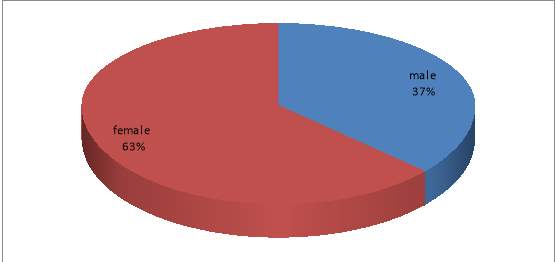
Figure 01: students’ gender
It is clear from the figure above that the leading majority are females with 63%, facing the percentage of 37% of males.
Question 02: Do you speak other languages than your native language? Yes No
The aim of this question is to determine if students are speaking other languages then their native language.
| Options | Number of students |
| Yes | 30 |
| No | 0 |
| Students’ total number | 30 |
Table 02: students who speak other languages and who don’t

Figure 02: students who speak other languages and who don’t
From the above figure we obtain that all of the respondents speak other languages then their native language.
Question 03: How long have you been studying English language?
It’s a free answer question used to figure out if their long or short term studies of the English language can affect how they master it and if the long term means they master it or not and vice versa .
| Options | Number of students |
| 10 | 6 |
| 11 | 20 |
| 12 | 3 |
| 13 | 1 |
| Students’ total number | 30 |
Table 03: number of years that students have been studying English language
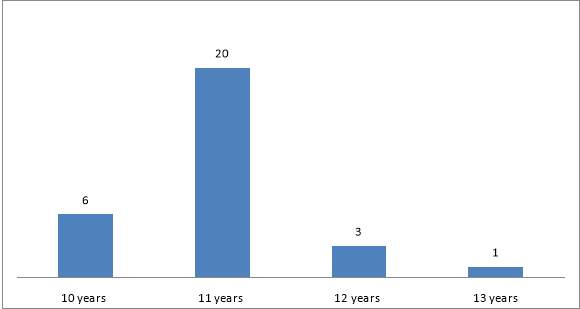
Figure 03: number of years that students have been studying English language
This figure shows that 6 students studied English language for 10 years, while 20 of them studied it for 11 years. 6 of them answered that they’ve been studying English for 12 years and the last one said that he studied it for 13 years ago.
Question 04: As an EFL student, how do you consider your learning abilities?
Very weak weak average good very good
The aim of this question is trying to understand more the students’ changes in their personality; if they’re confident of their abilities or not as they’re EFL students.
| Options | Number of students | Percentage |
| Very weak | 0 | 0% |
| Weak | 1 | 3% |
| Average | 12 | 40% |
| Good | 16 | 54% |
| Very good | 1 | 3% |
| Students total number | 30 | 100% |
Table 04: students’ learning abilities
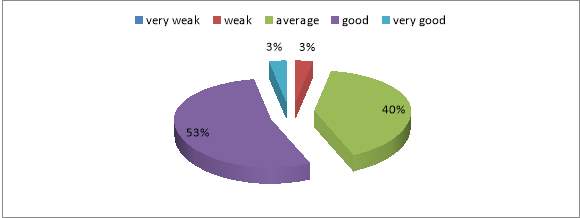
Figure 04: students’ learning abilities
This figure shows that 54% of students thought that there learning abilities are good, 40% of them find it average while 3% said that it’s weak, the rest which is 3% said that they’ve a very good learning abilities.
Question 05: How do you prefer to learn?
Alone with partner with a group from a monitor
Question 06: How do you best receive information?
Auditory Visual Kinaesthetic Tactile
These two question have a mutual aim is to figure out the students best methods of learning (how best they receive information) or to precise their learning styles.
| Options | Number of students |
| Alone | 17 |
| With partner | 1 |
| With a group | 7 |
| From a monitor | 5 |
| Total number | 30 |
| Options | Number of students |
| Auditory | 11 |
| Visual | 13 |
| kinaesthetic | 4 |
| tactile | 2 |
| Total number | 30 |
Table 05: individual, pair or group work Table 06: best methods of receiving information
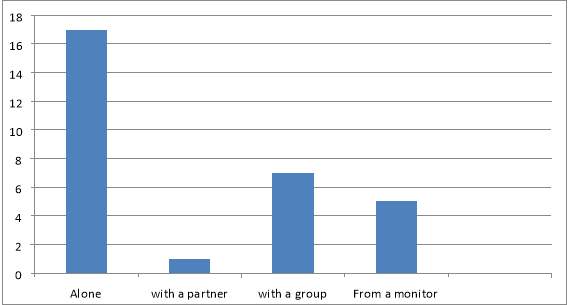
Figure 05: individual, pair or group work
This figure shows that 17 of the samples’ students prefer to learn alone, while 1 of them prefers to learn with his/her partner. 7 of them prefer group work and the rest (5of them) prefer learning or receiving information from the monitor.

Figure 06: best methods of receiving information
This figure shows that 11 of the sample students prefer to learn with audio materiel, 13of them prefer to learn through visual methods. 4 of them are kinaesthetic learner, while 2 of them like tactile methods.
Question 07: Are you aware about the importance of knowing your learning style in facilitating your English acquisition? Yes No
The aim of this question is to figure out if the students are aware of the importance of their learning styles in the process of acquiring language.
| Options | Number of students | Percentage |
| Yes | 29 | 97% |
| No | 1 | 3% |
| Total number | 30 | 100% |
Table 07: awareness of the importance of the learning styles in facilitating the language acquisition.
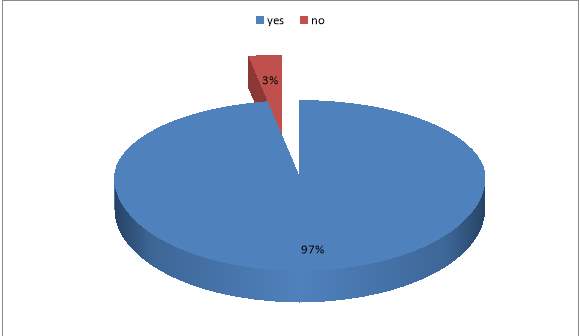
Figure 07: awareness of the importance of the learning styles in facilitating the language acquisition.
This figure shows that 97% of the students know the importance of being aware of their learning styles and its effect in facilitating the language acquisition process.
Question 08: Do your teachers take in consideration your learning style in making the course plan? Yes No (If yes: does it help you in improving your English acquisition?)
This question aims to investigate the objective of courses prepared by the teachers according to the students’ learning styles
| Options | Number of students | Percentage |
| Yes | 12 | 40% |
| No | 18 | 60% |
| Total number | 30 | 100% |
Table 08: Teachers and learning styles

Figure 08: Teachers and learning styles
These figure shows that 60% of the respondents said that teachers take in consideration their learning styles while planning the course; and when asking them for more explanation how they could know if they really did, they answered that they could figure it out according to their understanding of the information given by their teachers, and they said it improves their proficiency as EFL learners, while 40% said that teachers don’t take in consideration their learning styles and they prove it as the others did.
Question 09: What’s your goal through acquiring (learning) the English language?
Just to learn (To travel and speak with native speakers) / to get a job
This question aimed simply to figure out students’ motivation (internal motivation or External) to acquire the English language.
| Options | Number of students | percentage |
| Just to learn | 6 | 20% |
| To get a job | 24 | 80% |
| Total number | 30 | 100% |
Table 09: Students’ goals through acquiring the English language.

Figure 09: Students’ goals through acquiring the English language.
This figure shows that 80% said that their goal through being an EFL students is related to their lives i.e. to get a job, while 20% of them said that their motivation to be an EFL students is internal (just to learn).
Question 10: Do you think you are a pretty good language learner?
Disagree Agree strongly agree
The aim of this question is to figure out if the students are confident of their levels in mastering the English language and that all is depending on their personalities (and also their learning styles) because students with strong personalities will figure out their proficiency level easily and the others with less self-confident will be always in doubt about their level.
| Options | Number of students |
| Disagree | 1 |
| Agree | 27 |
| Strongly agree | 2 |
| Total number | 30 |
Table 10: students’ views about their level of proficiency in English language
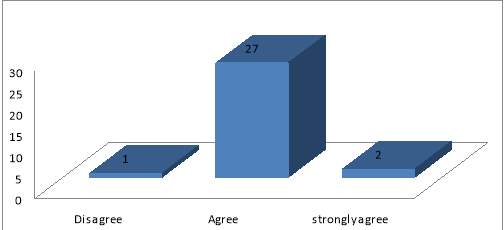
Figure 10: students’ views about their level of proficiency in English language.
From the above figure we figure that 27 students agreed that they’re pretty good language learners, 2 of them strongly agreed (very confident of themselves). The rest (one of them) thought he/she isn’t a pretty good language learner.
Question 11: Do you think that you’re patient in acquiring language!
Not at all a little somehow very much
This question is aimed to see if the EFL learners having all the characteristics of a good learners especially patience that is needed to achieve a good level of proficiency.
| Options | Number of students | Percentage |
| Not at all | 0 | 0% |
| A little | 5 | 17% |
| Somehow | 19 | 63% |
| Very much | 6 | 20% |
| Total number | 30 | 100% |
Table 11: learners’ perspectives’ about their level of patience as EFL learners
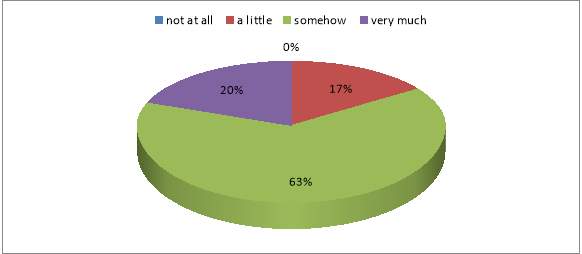
Figure 11: learners’ perspectives’ about their level of patience as EFL learners.
This figure demonstrated clearly that most of the EFL students (63 %) thought they’re somehow a patient language learner, 20% of them thought they’re a very patient learners. while 17% said they’re not really patient when it comes to language learning.
Question 12: How do rate your overall proficiency in the English language in comparison to the proficiency of other students in your class?
Excellent Good average Poor
This question aimed to compare students’ aptitude of the same class toward English language learning.
| Option | Number of students |
| Excellent | 0 |
| Good | 23 |
| average | 7 |
| Poor | 0 |
| Total number | 30 |
Table 12: Students’ proficiency as EFL learners.
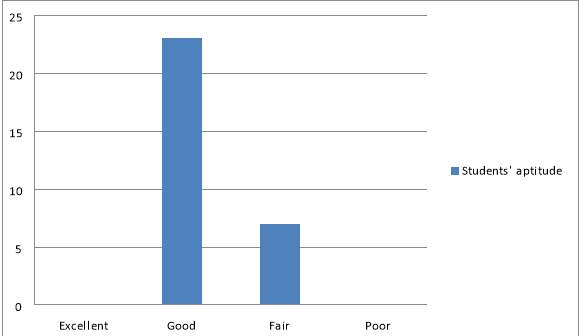
Figure 12: Students’ proficiency as EFL learners.
This figure shows that 23 of them thought that they’ve a good aptitude!, 7 of them thought they have an average aptitude while no one of them talk about excellent or poor aptitude.
Question 13: Do you find that your ability to acquire language now is different from when you were younger? Yes no (If yes, say how)
This question is aimed to figure out the role of age in the process of acquiring language.
| Options | Number of students | Percentage |
| Yes | 25 | 83% |
| No | 5 | 17% |
| Total number | 30 | 100% |
Table 13: the role of age in the process of acquiring language.
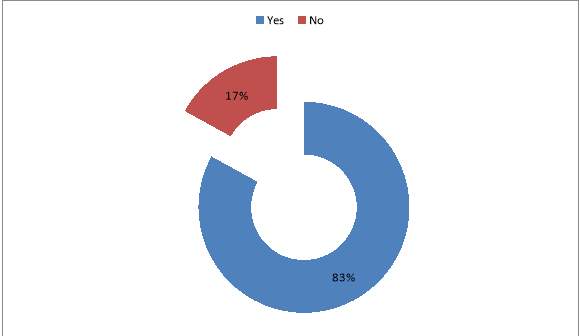
Figure 13: the role of age in the process of acquiring language.
This figure shows that 83% of the EFL students thought their abilities to acquire language has changed over time (they said that their abilities developed from when they were younger), and the rest (17%) thought that their abilities didn’t change over time.
Question 14: Do you feel that you’re afraid of practicing your English in public to not get embarrassed? Not at all A little Somehow Very much
This question is aimed to figure out the students’ willingness to communicate with others
| Options | Number of students |
| Not at all | 11 |
| A little | 7 |
| Somehow | 9 |
| Very much | 3 |
| Total number | 30 |
Table 14: students’ desire to communicate in public.
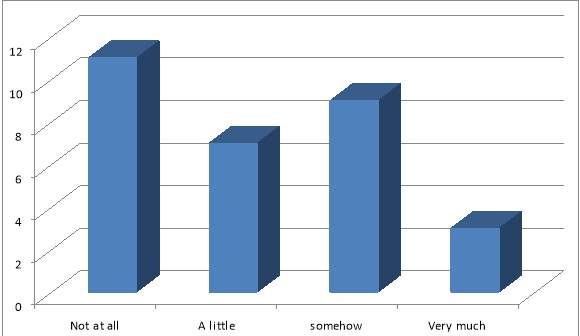
Figure 14: students’ desire to communicate in public.
This figure shows that majority of the EFL students (11 of the respondents) don’t feel embarrassed practicing their English in public, while 9 of them feel embarrassed somehow. 7 of them feel a little embarrassed while the rest (3 of the respondents) feel very much embarrassed when practicing their English in public.
Question 15: Do you think that the learners’ feelings or their emotional situation can affect his ability to acquire language. Yes no (If yes how?)
The aim of this question is to know if the changes in the emotional situation of the EFL learners can affect his ability to acquire language or not.
| Options | Number of students | Percentage |
| Yes | 15 | 50% |
| No | 15 | 50% |
| Total number | 30 | 100% |
Table 15: the effect of the emotional situation of EFL learners on his ability to acquire language.

Figure 15: the effect of the emotional situation of EFL learners on his ability to acquire language.
This figure shows that half of the respondents thought that the psychological situation of the learner affect his/her ability to acquire language (by the lack of focus) and the other half thought that there is no relationship between the psychological situation and the process of acquiring language.
Question 16: What do you think is the origin of individual differences??
Race Sex Heredity Maturity Social and economic factors
This question is aimed to find out the origin of the IDs
| Options | Number of students | Percentage |
| Race | 6 | 20% |
| Sex | 4 | 14% |
| Heredity | 3 | 10% |
| Maturity | 11 | 36% |
| Social and economic factors | 6 | 20% |
| Total number | 30 | 100% |
Table 16: the origin of IDs
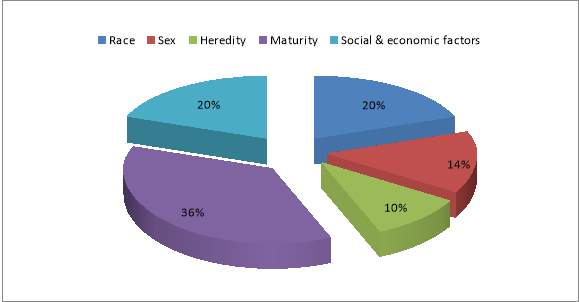
Figure 16: the origin of IDs.
This figure shows that 36% of the EFL students thought that maturity is the main cause of these differences, while 20% of them answered that race may be the cause of IDs, other 20% claimed that IDs are found because of social and economic factors .14% talk about sex as a cause of IDs. The rest (10%) said that heredity is the what cause those personal factors .
II.4.Finding:
The research on IDs is complex and the results about it are not easy to interpret this is because of:
The results of the questionnaire analysis as the data gathering tool of our research prove the following:
General conclusion:
The main cause along this research was to highlight the nature of the relation existing between the individual difference and the language acquisition process in the EFL classes. The literature review of this research shows clearly that there is a high connection between the process of” acquiring language”, and the English proficiency level in EFL classes with the phenomenon of those personal factors that called “individual differences”; this connection explains why one learner may be more successful than another even they go through the same experiences?.
Learners should be aware of the importance of their individual differences in achieving a high level of competency in the language acquisition process in the other hand, teacher also should be aware of their students’ individual differences (each individual has his ways to process and acquire information), and they should take those variables in consideration while planning a course to make it accurate for all of the class students.
We get an answer for the research question thanks to the obtained results from the students’ questionnaire. Furthermore, we found that the learners’ individual differences affect the language acquisition process in a direct way, but we notice that the master students don’t take in consideration those factors and teachers too.
The individual’s desire to master a language is the main goal, and they’ll be able to achieve it using their individual differences as a key feature with a help from their teachers through taking those factors in consideration while planning the courses. Despite all the ink that has been expended on the topic, the topic of the individual differences continues to be one of the most challenging aspects of foreign language education.
Bibliography:
References:
McCall, R .B., Eichorn, D .H., & Hogarty,P .S. (1997). Transition in early mental development. Chicago: Published by the University of Chicago Press for the Society for Research in Child Development.
Dörnyei, Zoltán. 2006. “Individual differences in second language acquisition”, AILA Review 19: 42-68.
Ranta, Leila. 2002. “The role of learners’ language analytic ability in the communicative classroom”, in: Peter Robinson (ed.), Individual differences and instructed language learning. Amsterdam: Benjamins, 159-180.
Carrol, John. B. and Stanley. M. Sapon. (2002). Modern Language Aptitude Test. Bethesda, MD: Second Language Testing.
Pimsleur, Paul. 1966. Pimsleur Language Aptitude Battery (PLAB). New York: Harcourt Brace Jovanovich.
Dörnyei, Zoltán. 2005. The psychology of the language learner. Individual differences in second language acquisition. Mahwah, NJ: Lawrence Erlbaum.
Kolmos, A., & Holgaard, J. E. (2008). Learning Styles of Science and Engineering Students in Problem and Project Based Education. In Book of Abstracts Sense Publishers.
Brown, H. D. (2007). Principles of language learning and teaching (5th Ed.). New York: Pearson Education Inc.
Brown, H.D.(1980). Principles of language learning and teaching. New Jersy: Prentice Hall, INC., Englewood Cliffs.
Oxford, Rebecca L. 1999a. “Relationships between second language learning strategies and language proficiency in the context of learner autonomy and self-regulation”, Revista Canaria de Estudios Ingleses 38: 109-126.
Heyde, Adelaide. 1979. The relationship between self-esteem and the oral production of a second language. [Unpublished Ph.D. dissertation, University of Michigan].
Baumeister, Roy F. 1999. “The nature and structure of the self: An overview”, in: Roy F. Baumeister (ed.), The self in social psychology. Philadelphia, PA: Psychology Press, 1-20.
Nyikos, Martha. 2008. “Gender and good language learners”, in: Carol Griffiths (ed.),Lessons from good language learners. Cambridge: Cambridge University Press,73-82.
Legato, Marianne J. 2005. Why men never remember and women never forget. New York: Rodale.
Ellis, Rod. 1995. The study of second language acquisition. Oxford: Oxford University Press.
López Rúa, Paula. 2006. “The sex variable in foreign language learning: an integrative approach”, PORTA LINGUARIUM 6: 99-114.
Horwitz, Elaine K., Michael B. Horwitz and Joann Cope. 1986. “Foreign language classroom anxiety”, The Modern Language Journal 70, 2: 125-132.
MacIntyre, Peter D. 1999. “Language anxiety: a review of the research for language teachers”, in: Dolly J. Young (ed.), Affect in foreign language and second language learning: a practical guide to creating a low-anxiety classroom atmosphere. Boston: McGraw-Hill, 24-45.
Ellis, Rod. 2004. “Individual differences in second language learning”, in: Alan Davies and Catherine Elder (eds.), The handbook of applied linguistics. Malden, MA: Blackwell Publishing, 525-549.
Dewaele, Jean-Marc. 2013. “The link between foreign language classroom anxiety and psychoticism, extraversion, and neuroticism among adult bi- and multilinguals”, The Modern Language Journal 97, 3: 670-684.
Chomsky, N. (1972). Language and mind. New York: Harcourt Brace Jovanovich.
Clark, E.V. (2009). First Language Acquisition (second edition).Cambridge : Cambridge University Press.
Chomsky, N. (1977). On What-Movement. In P. Culicover, T. Wasow, & A. Akmajian(Eds). Formal Syntax. New York: Academic Press.
Pinker, S. ( 1994). The language Instinct. England: Clays Ltd.
Liebert, R.M., Wicks-Nelson, R., & Kail, R.V. (1986). Developmental Psychology. (4th ed). Englewood Cliffs, N.J.: Prentice Hall.
Bloom, L.M. (1974). “Imitations in Language Development: If, When, and Why”, “Cognitive Psychology”, pp. 380-420.
Palermo, David S. (1978). “Psychology of Language”. Dallas: Scott, Foresman and Co.
Kramiņa, I. (2000) Lingo – Didactic Theories Underlying Multi – Purpose Language Acquisition. University of Latvia
Robbins, D. (2007) Vygotsky’s and Leontiev’s Non-classical Psychology Related to Second Language Acquisition. International Nordic-Baltic Region Conference of FIPLV Innovations in Language Teaching and Learning in the Multicultural Context 15-16th June, 2007, Riga, Latvia.
Krashen, S. (1982). Theory versus practice in language training. In R. W. Blair (Ed.), Innovative approaches to language teaching (pp. 15-24). Rowley, MA: Newburry House Publishers.
Brown, H. D. (1994). Principles of language learning and teaching (3rd ed.). USA: Prentice Hall Regents.
KRASHEN, S. (1982) Newmark’s “Ignorance Hypothesis” and current second language acquisition theory. Unpublished manuscript.
Gattiker, U.E., & Hlavka, A. (1992). Computer attitudes and learning performance: Issues for management education and training. Journal of Organizational Behaviour. H , 89-101.
Spohrer, J.C., & Soloway, E. (1986). Novice mistakes: Are the folk wisdoms correct? Communications of the AMC. 29. 624-632.
Snow, R. E. (1986). Individual differences and the design of educational programs. American Psychologist. 41., 1029- 1039.
Schwartzman, A. E., Gold, D., Andres, D., Arbuckle, T. Y., & Chaikelson, J. (1987). Stability of intelligenceÐ A 40 year follow up. Canadian Journal of Psychology, 41, 244 – 256.
Eichorn, D. H., Hunt, J. V., & Honzik, M. P. (1981). Experience, personality, and IQ: Adolescence to middle age. In D. H. Eichorn, J. A. Clausen, N. Haan, M. P. Honzik, & P. H. Mussen (Eds.), Present and past in middle life. New York: Academic Press.
Appendix:
The Students’ Questionnaire
Dear students,
We are preparing a research on ‘individual differences and language acquisition ‘This questionnaire is a part of research, the aim of this questionnaire is to gather data in order to know the effect of individual differences on language acquisition Your answers are very important for the validity of our research We would be grateful if you could answer these questions to help us. Please tick (✓) the appropriate box or make full statements whenever necessary.
May we thank you in advance for your collaboration.
Section one: general information

 Gender : male female
Gender : male female
 Yes No
Yes No
………………………………………….




 Very weak weak average good very good
Very weak weak average good very good



 How do you prefer to learn?
How do you prefer to learn?Alone with partner with a group from a monitor
Section two: students’ IDs and the acquisition process

 How do you best receive information?
How do you best receive information?
 Auditory Visual
Auditory Visual
Kinesthetic Tactile

 Are you aware about the importance of knowing your learning style in facilitating your English acquisition?
Are you aware about the importance of knowing your learning style in facilitating your English acquisition?Yes No

 Do your teachers take in consideration your learning style in making the course plan?
Do your teachers take in consideration your learning style in making the course plan?Yes no
If yes: does it help you in improving your English acquisition?
……………………………………………………………………………………..
 Just to learn (To travel and speak with native speakers)
Just to learn (To travel and speak with native speakers)
 To get a job
To get a job


 Do you think you are a pretty good language learner?
Do you think you are a pretty good language learner?Disagree Agree strongly agree



 Do you think that you’re patient in acquiring language!
Do you think that you’re patient in acquiring language!Not at all a little somehow very much



 How do rate your overall proficiency in the English language in comparison to the proficiency of other students in your class?
How do rate your overall proficiency in the English language in comparison to the proficiency of other students in your class?Excellent Good Fair Poor


 Yes no
Yes no
If yes, say how ! ……………………………………………………………………………………………………………………………………………………………………………………………………………………………………………………………………….
 Do you feel that you’re afraid of practicing your English in public to not get embarrassed?
Do you feel that you’re afraid of practicing your English in public to not get embarrassed? Not at all
Not at all
 A little
A little
 Somehow
Somehow
Very much
 Do you think that the learners’ feelings or their emotional situation can affect his ability to acquire language?
Do you think that the learners’ feelings or their emotional situation can affect his ability to acquire language? Yes no
Yes no
If yes ,how? ……………………………………………………………………………………………………………………………………………………………………………………


 Race Sex
Race Sex

 Heredity Maturity
Heredity Maturity
Social and economic factors
You have to be 100% sure of the quality of your product to give a money-back guarantee. This describes us perfectly. Make sure that this guarantee is totally transparent.
Read moreEach paper is composed from scratch, according to your instructions. It is then checked by our plagiarism-detection software. There is no gap where plagiarism could squeeze in.
Read moreThanks to our free revisions, there is no way for you to be unsatisfied. We will work on your paper until you are completely happy with the result.
Read moreYour email is safe, as we store it according to international data protection rules. Your bank details are secure, as we use only reliable payment systems.
Read moreBy sending us your money, you buy the service we provide. Check out our terms and conditions if you prefer business talks to be laid out in official language.
Read more